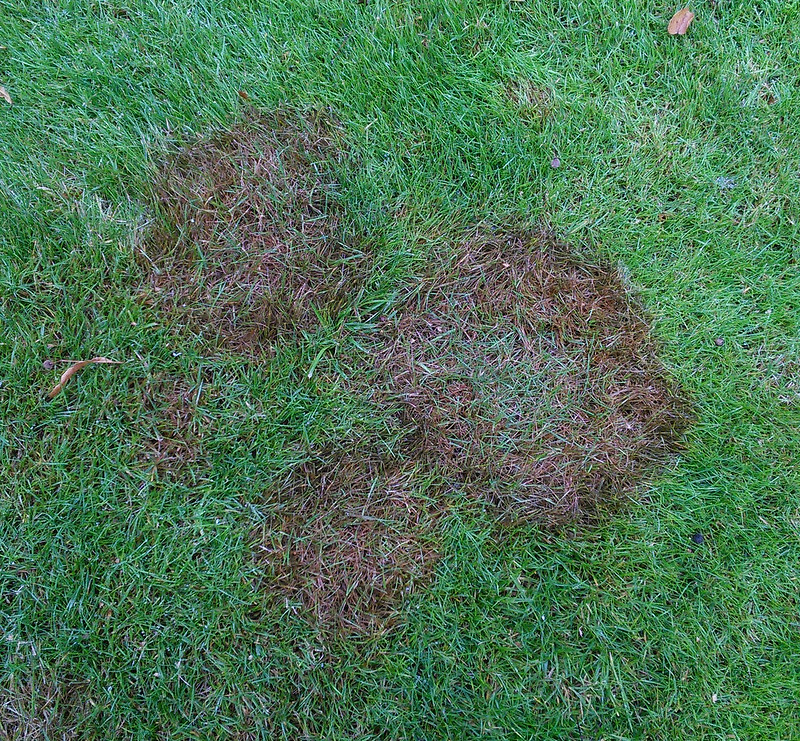13 Spring Lawn Care Tips for Cleveland, OH
BY ABDUL WADOOD | MARCH 31ST, 2023 | CLEVELAND, LAWN CARE, OHIOSpring doesn’t always feel like spring in Cleveland, where temperatures can vary wildly and you might have to deal with the fluffy white stuff as late as April.
But if you want a great lawn this summer and deep into the fall, this is the time to put the work in. Here are our 13 tips to turn your Cleveland lawn into a mini heaven.
In this article:
- Rake Debris
- Dethatch (If Necessary)
- Treat Lawn Diseases
- Overseed
- Test Your Soil
- Fertilize
- Prep Your Lawn Equipment
- Mow
- Water Wisely
- Remove Weeds
- Get Rid of Lawn Pests
- Aerate
- Clean Gutters
1. Rake Debris
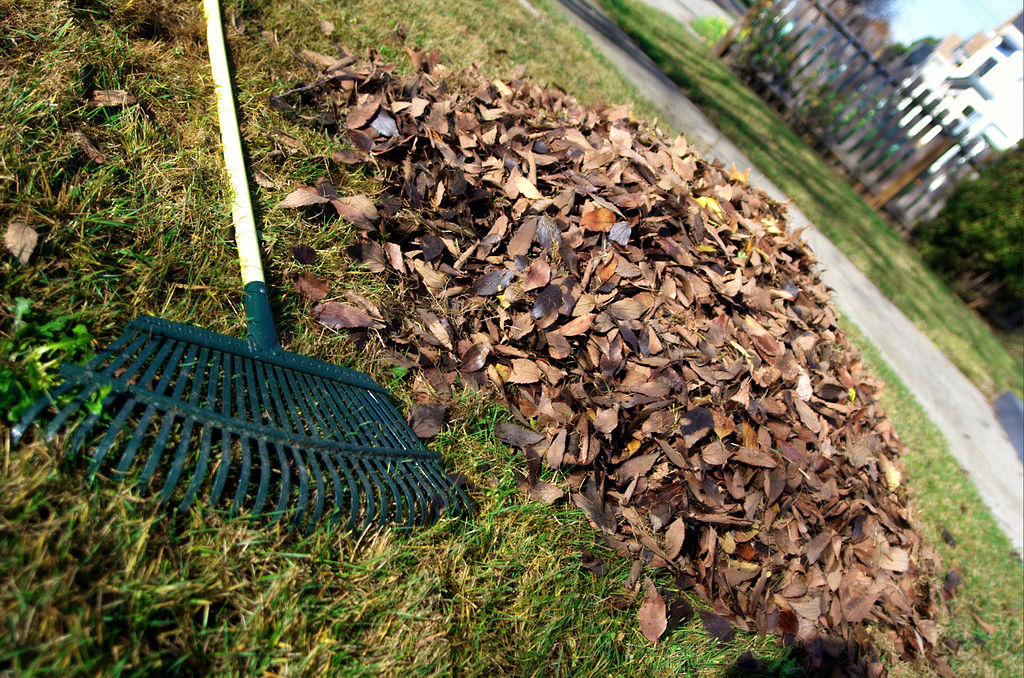
Rake debris, remove dead plants, and clear fallen branches to help your lawn breathe more effectively. Removing debris also removes the barriers that block your grass from getting the nutrients it needs. Raking can split your grass blades, promoting straight grass growth.
And let’s face it, a yard without debris looks better any day. It also gives you a blank canvas for mowing, fertilizing, and performing other lawn activities.
Note: It’s nearly impossible to avoid thatch altogether as it keeps building up. Thatch less than an inch in thickness isn’t an issue and can actually be beneficial to your lawn as it provides nutrients for grass growth, protects the grass from damage, and helps preserve moisture in the soil.
2. Dethatch (If Necessary)
If there’s too much thatch on your lawn and raking doesn’t seem to help, dethatching is the solution.
Alright, but what’s thatch? Thatch is the grass clippings and leaves that accumulate in your lawn.
As mentioned above, thatch less an inch in thickness can be good for your lawn. But anything more than that can be too much because excessive thatch can attract pests, cause diseases, and deprive your grass of nutrients.
Dethatching your lawn is necessary before aerating it. But even if your yard doesn’t need aerating, we recommend you dethatch it at least once a year.
What’s the best time to dethatch lawns
You should dethatch your lawn when the grass is actively growing. The best time to dethatch cool-season grass is from late summer to early fall. If you have warm-season grass, you can dethatch it between late spring and early summer.
3. Treat Lawn Diseases
Many homeowners in Cleveland struggle with diseased lawns. Fungus loves Cleveland’s humid climate, which is why the city ranks No. 3 among the worst U.S. cities for weeds and lawn diseases.
The beginning of spring is the best time for fungi to attack your lawn, so, take these precautionary steps to eliminate fungi at their source.
- Plant cool-season grasses that easily adapt to Cleveland’s climate.
- Irrigate your lawn with the right amount of water. Too much water can cause fungus growth.
- Set up an effective drainage system.
- Feed your yard correctly.
Here are the common Cleveland lawn diseases you should be aware of.
Pythium Blight
What to look for
Pythium blight appears as small circular patches about a foot in diameter. The infected grasses show up as cottony white material. They appear clearly when the grass is wet.
How to treat pythium blight
Dethatch your lawn, then treat it with a fungicide that includes mefenoxam or propamocarb.
Brown Patch
What to look for
Brown patch appears as circular brownish-yellow patches between a few inches and several feet in diameter. Tall fescue grasses are more susceptible to brown patch than other grasses.
How to treat brown patch
You can use a fungicide that includes PCNB, propiconazole, triadimefon, myclobutanil, or thiophanate-methyl as one of its active ingredients.
Red Thread
What to look for
Red thread appears as pinkish-red patches that can be anywhere between two inches and two feet in diameter. They won’t usually kill your grass but can increase the susceptibility of your lawn to other diseases.
How to treat red thread
Apply nitrogen fertilizer, water the grass, and mow your lawn. You may also apply fungicides, but they won’t be effective if you don’t maintain your yard correctly, as the disease will most likely return.
4. Overseed
Well, you have treated lawn diseases and removed debris from your lawn. That’s great! But, if your grass still looks thin and has unattractive patches, you may have to overseed your yard.
Overseeding is the process of spreading grass seeds over your existing lawn to improve grass density and fill in the patches. You should overseed your yard after aerating or dethatching it as it increases the access to soil.
Many homeowners in Cleveland prefer cool-season grasses because of the climate, and early fall is the best time to plant cool-season grass seeds.
When you plant grass seeds in early fall, they get about three months to grow before winter starts. When spring kicks in, the soil temperature increases, thus accelerating the growth of grass. Before summer, the grass will have strongly established its roots to handle the stress.
Last but not least, ensure the newly planted grass seeds get sufficient water and fertilizer.
Pro tip: If only a few bare patches are in your yard, it may be because of a pest. So, before you overseed, ensure that a lawn pest isn’t causing the issue.
5. Test Your Soil
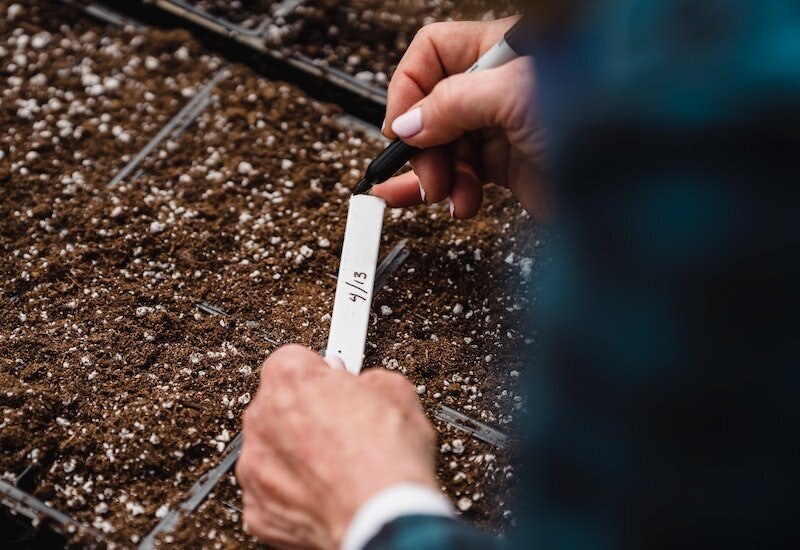
You should test your soil to know whether it contains the essential nutrients for your grass. You may test the soil yourself using a DIY kit or send it to the local soil testing laboratories.
Many Cleveland homeowners tend to test their soil before fertilizing their lawns. It’s a good practice to test your soil at least once a year.
Depending on the soil test result, add amendments such as potassium, magnesium, calcium, or phosphorus to your soil. Also, if you plan to fertilize, wait for at least four to five weeks so the fertilizer and amendments won’t negatively interact with each other.
6. Fertilize
Fertilize your lawn as your grass turns green and starts growing. This is typically in early spring (between March and April). You should avoid fertilizing too early, especially if you have cool-season grass, as it can promote rapid growth, which is bad for your yard.
Your soil test will tell you what kind of slow-release fertilizer to purchase. Generally, most fertilizers contain nitrogen, phosphorus, and potassium in different percentages, as they are essential nutrients for plant growth.
Fast-release fertilizers can make your grass grow quicker, but they can damage it. Sometimes, they can even burn it. Also, don’t spread fertilizers by hand. Instead, use a spreader to apply them evenly.
The general recommendation is to fertilize your yard four times a year with 1 pound of nitrogen per 1,000 square feet. Here’s how to calculate how many pounds of fertilizer your lawn needs.
- Divide 100 by the nitrogen percentage for 1 lb. of fertilizer. For instance, fertilizer with 10% nitrogen will need 10 pounds for 1,000 square feet.
- Divide the size of your lawn (square footage) by 1,000.
- Multiply with the pounds of fertilizer needed.
This formula may sound complex, but it’s easy when you apply it practically. Make sure not to overfertilize your lawn, as it can damage the grass.
7. Prep Your Lawn Equipment
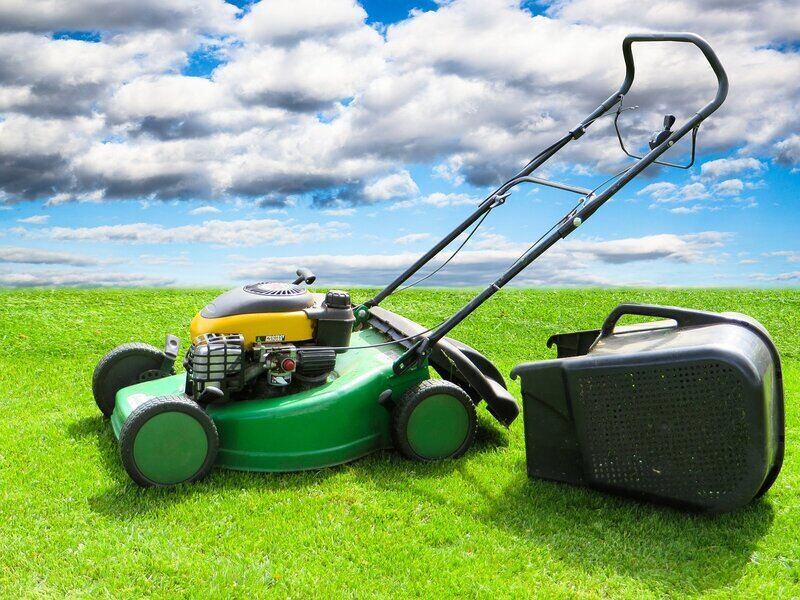
Winter has come to an end. Spring has begun. Now it’s time to get your lawn mower and other equipment ready to bring your yard back into shape.
Here’s a checklist to bring your lawn mower back to form.
- If you use a gas-powered lawn mower, fill the tank, replace the spark plug, and change the engine oil and oil filter.
- If you use an electric lawn mower, check the battery condition and replace it if necessary.
- Sharpen your lawn mower blade.
Follow these steps to sharpen your lawn mower blade.
- Disconnect the spark plug to prevent the mower from accidentally starting.
- Empty the gas tank.
- Mark the blade with a marker to reinstall it with the correct side facing upwards.
- Use a long-handled wrench to remove the bolt on the blade.
- Clean the blade with WD-40.
- Place the blade in a vice and sharpen it with a file. Push it in one direction, following the blade’s angle.
- Do the same on the other side.
Don’t forget to check if your hedge trimmer blades are sharp enough and weed eater has enough line.
8. Mow
Turn on your lawn mower and start mowing your lawn as soon as you notice your grass has hit 2 inches of height.
The mowing height depends on your grass type. Here’s the recommended mowing height for common grasses in Cleveland.
| Grass type | Recommended height |
| Fine fescue | 2 ½ – 3 ½ inches |
| Tall fescue | 2 ½ – 3 ½ inches |
| Perennial ryegrass | 1 ½ – 2 ½ inches |
| Kentucky bluegrass | 2 ½ – 3 inches |
Follow these tips for a perfect mow.
- Mow your lawn in the early evening when the grass is dry. Avoid mowing in the morning because of the moisture from dew. Wet grass doesn’t cut as well.
- Don’t cut more than one-third of your grass’s total height to prevent stressing the grass blades.
- Collect the clippings. But, during dry weather, you can leave them on the grass to hold moisture.
- Mow in straight lines to avoid missing areas.
- Edge to give your lawn a manicured appearance.
9. Water Wisely
Too much or too little water can both harm your lawn. Overwatering can make your yard susceptible to pests and disease. It can also cause shallow root growth and excessive thatch buildup.
Underwatering will cause your lawn to lose its color. If your grass is turning gray and footprints linger because the grass doesn’t bounce back quickly, you should water.
Cleveland lawns generally require about two inches of water each week. However, the exact amount depends on the type of grass. Don’t forget to consider the rainfall for that week when watering.
For the best efficiency, water your lawn in the morning before 9 a.m. If you water your yard at night, the extra water will remain in the soil, making your grass more susceptible to disease.
We recommend you set up an automated irrigation system to make sure your lawn gets the right amount of water at the correct time.
10. Remove Weeds
Spring is the season when weeds start growing. It’s essential that you get rid of them to keep your lawn in good shape.
Remember the good old days when you have to pull the weeds with your hands? It’s a fun experience, but it can be a pain when there are too many weeds. Now, you don’t have to worry about removing the weeds yourself, thanks to pre-emergent and post-emergent herbicides.
Apply a pre-emergent herbicide to kill the weeds before they germinate. Early spring (around April) is the best time to apply pre-emergents to your Cleveland lawn.
If you want to overseed your lawn after applying pre-emergents, wait for at least four months, as they prevent seeds from germinating.
If you have already started to notice weeds on your lawn, it may be too late to apply a pre-emergent herbicide. In this case, go for post-emergent herbicide.
11. Get Rid of Lawn Pests
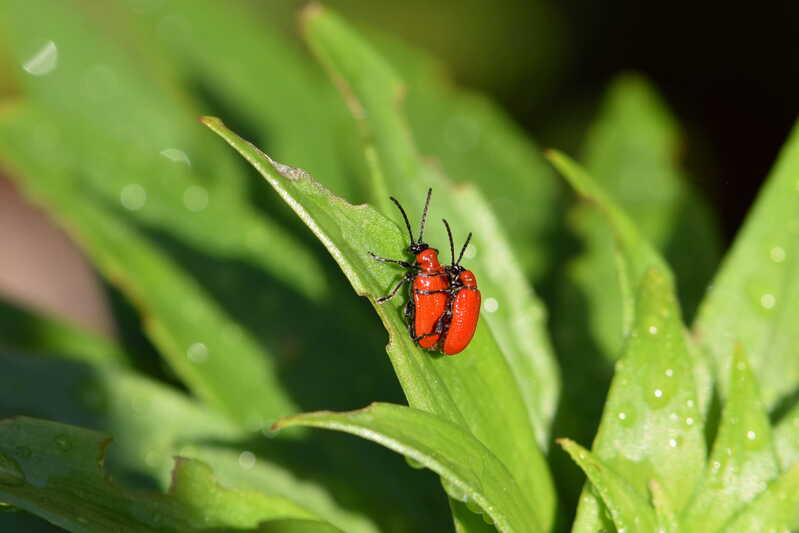
Prevention is better than cure. You can keep pests away from your lawn by correctly watering the grass, fertilizing, and dethatching.
But! It’s practically impossible to avoid pests altogether. These pesky pests will somehow make their way into your yard. Spring is usually the time when lawn pests reproduce. Eliminate them before they get time to lay and fertilize their eggs.
Here are the pests common to Cleveland lawns.
- Grubs
- Armyworms
- Chinch bugs
- Fire ants
- Termites
- Moles
- Wasps
- Mosquitoes
Some of these pests only damage your lawn. But some can attack humans too. So, if you spot these pesky creatures in your yard, take immediate action.
Use pesticides that target the specific pest in your yard. Avoid catch-all pesticides as they are less effective and can harm beneficial insects and plants.
It’s usually better to seek the help of a professional to get rid of pests, as some can be very aggressive and harmful to humans.
12. Aerate
Aeration is the process of perforating your soil with holes to allow air, water, and other nutrients to reach the roots easily. Generally, we recommend you aerate your lawn once a year.
The best time to aerate the grass is when it grows. As most homeowners in Cleveland have cool-season grass, early spring can be the best time to aerate your lawn.
Pro tip: Aerate your lawn a day after you water your grass. It’s easier to aerate when the soil is moist.
13. Clean Gutters
A lawn without clean gutters isn’t perfect. So, don’t neglect cleaning your gutters. Here’s why:
- Debris on your gutters will cause water to overflow, damaging the interior and exterior of your home.
- Clogged gutters can attract pests.
- Dirty gutters can spoil the look of your otherwise attractive yard.
The Final Word
Spring is the time of the year when your lawn needs your care again. Get your yard back to shape to enjoy the weekends with your family in your home.
If you’re on a busy work schedule and don’t want to spend your weekends doing lawn chores, don’t worry. Wikilawn Cleveland lawn care experts can help you with everything needed to make your lawn lush and beautiful.
Main Photo by: Pxfuel
